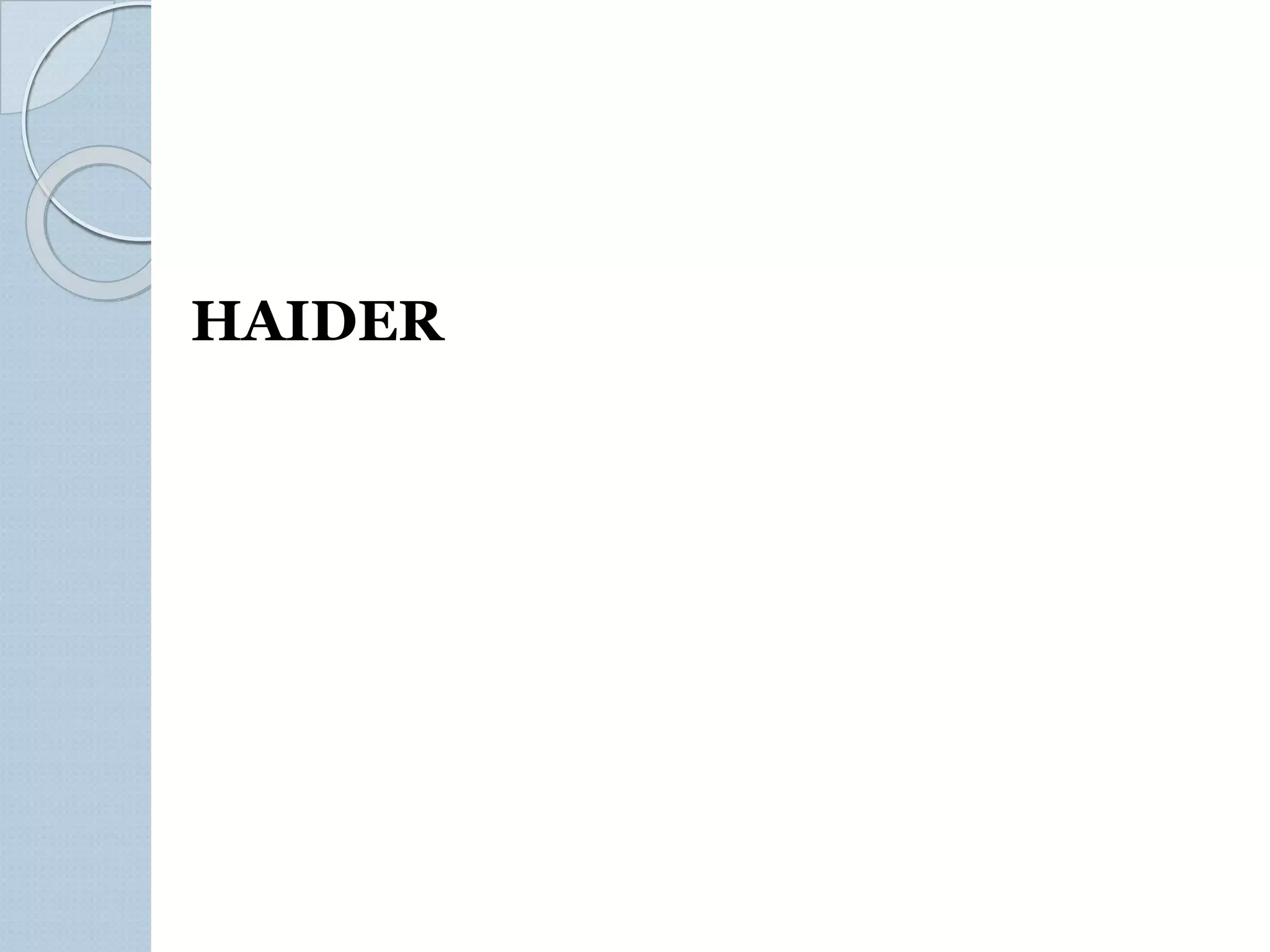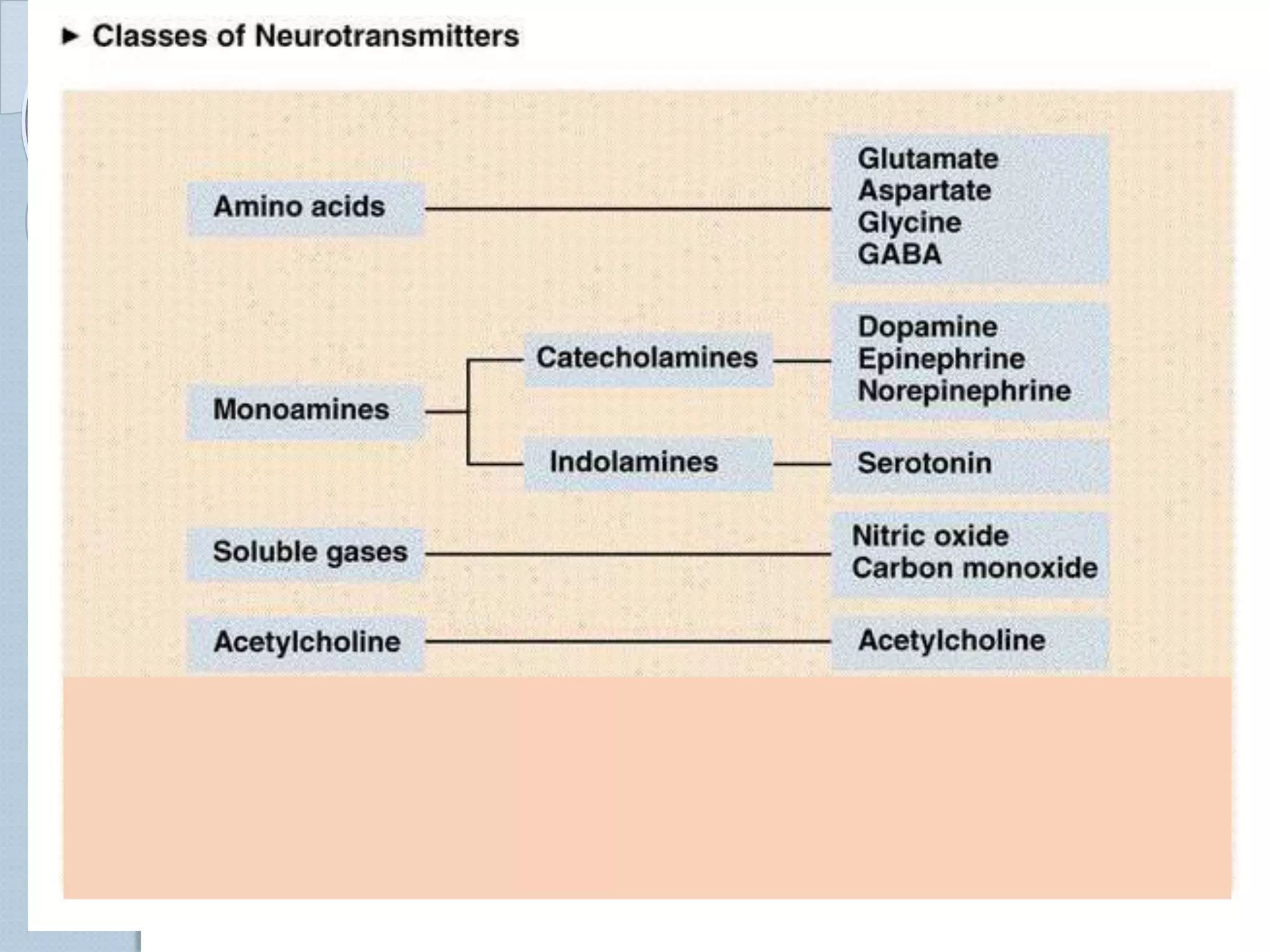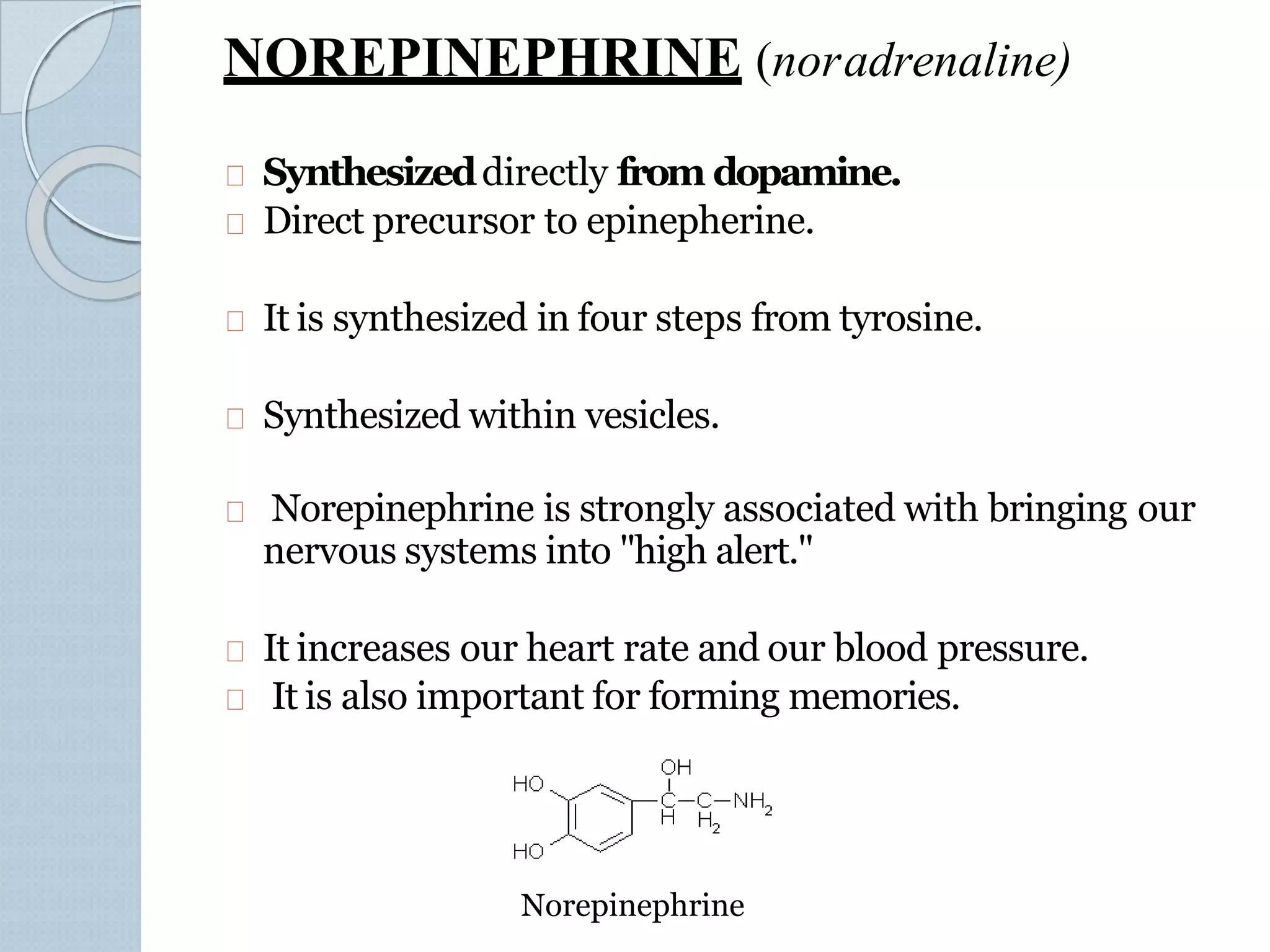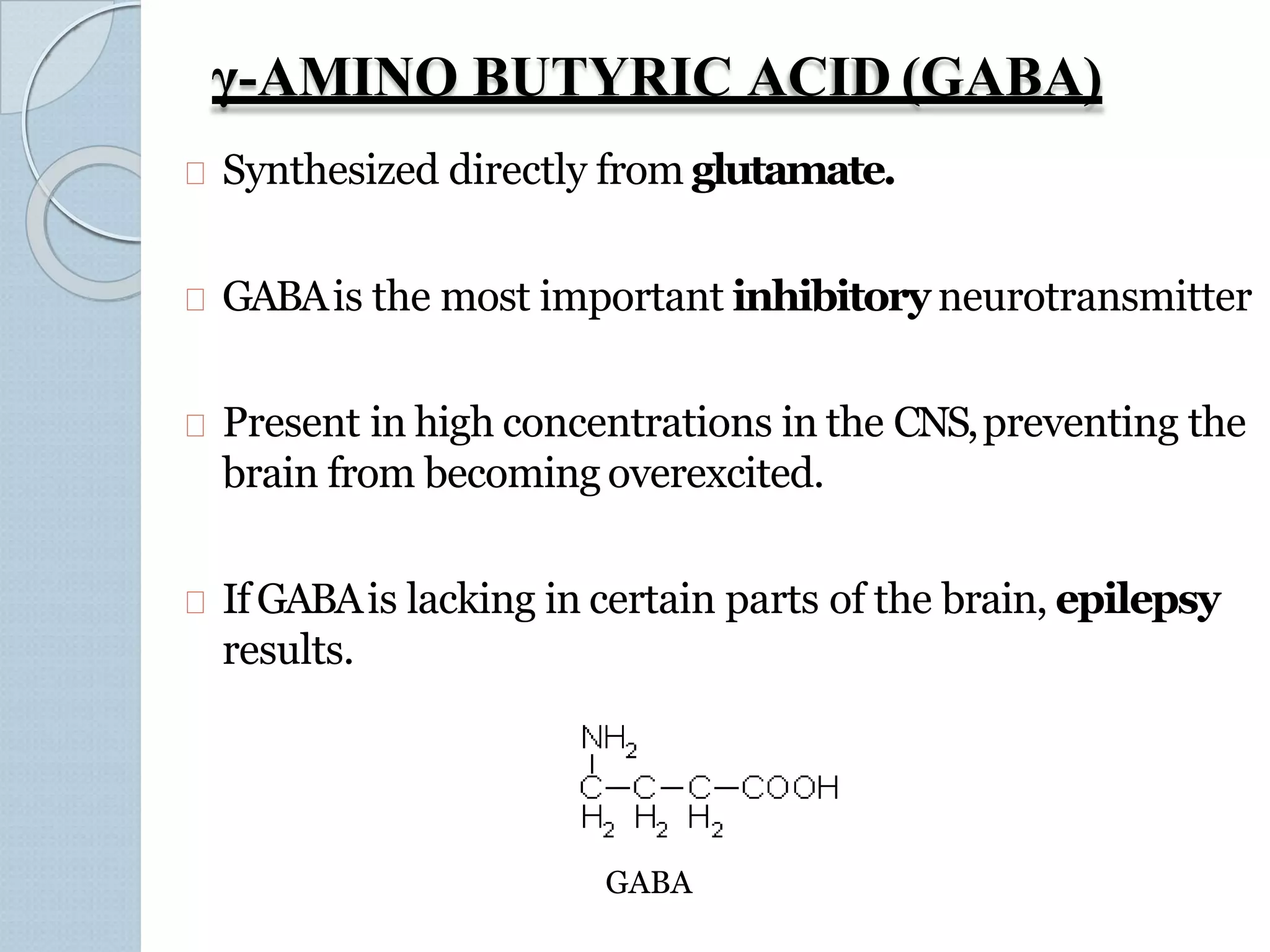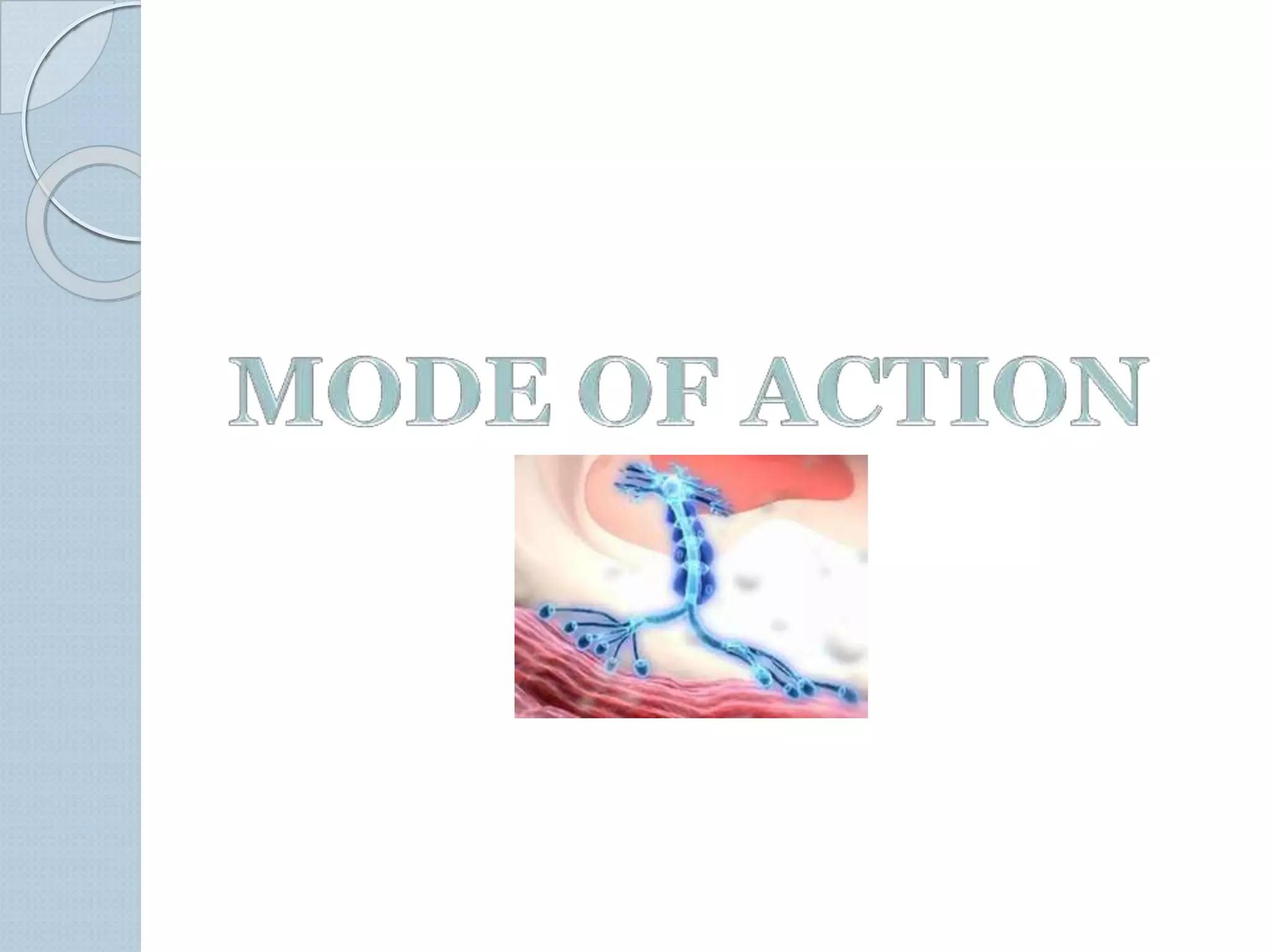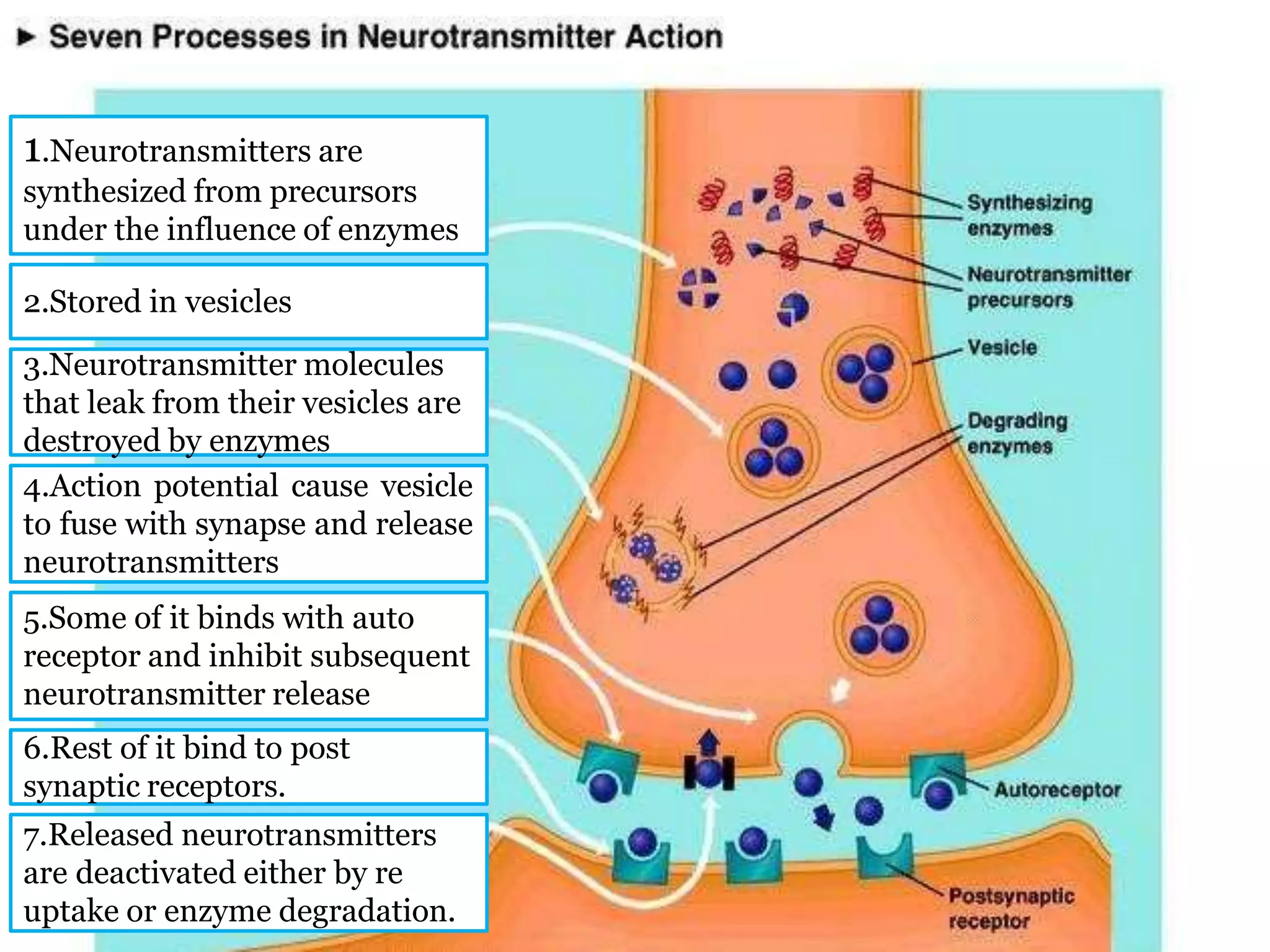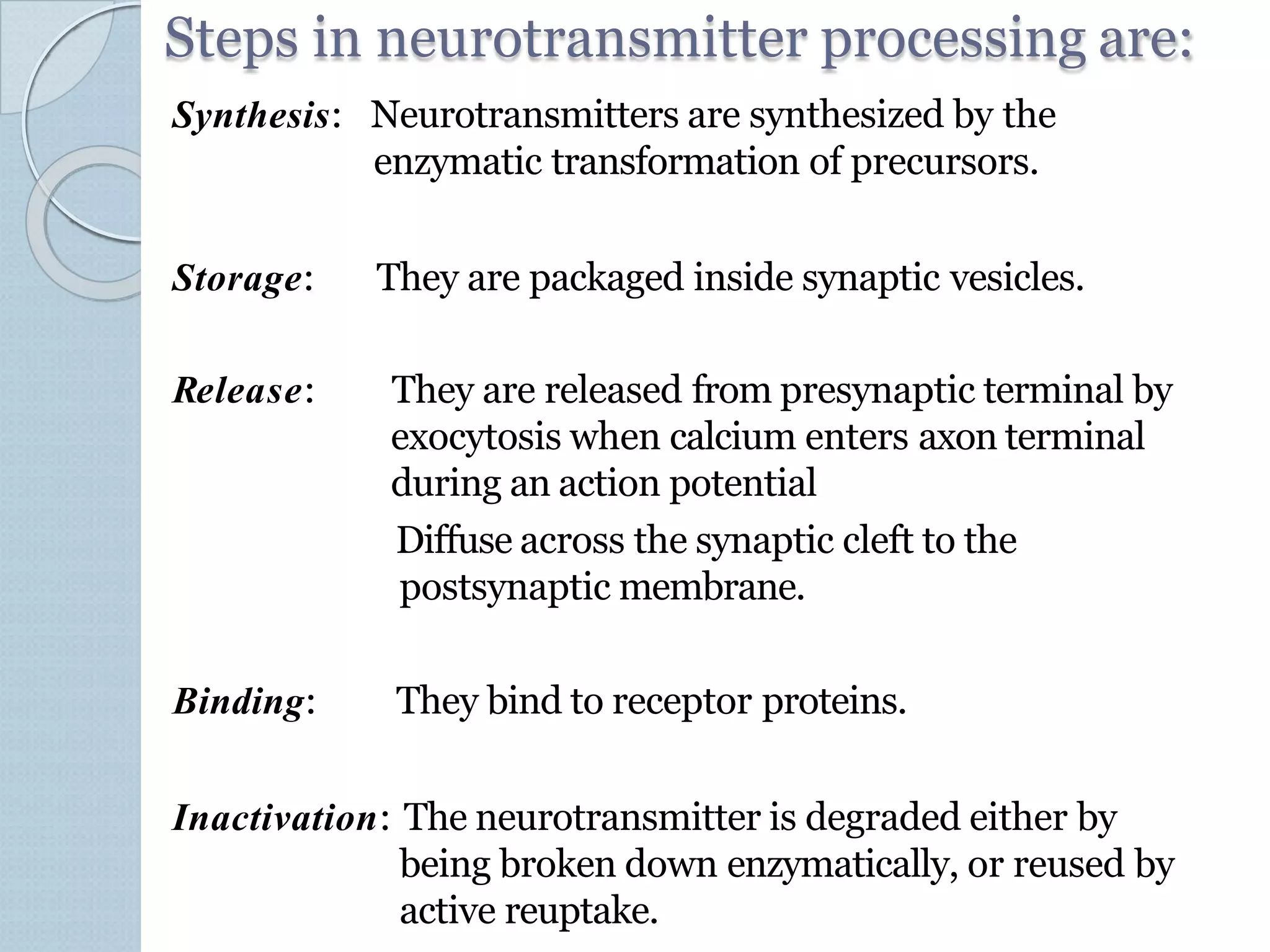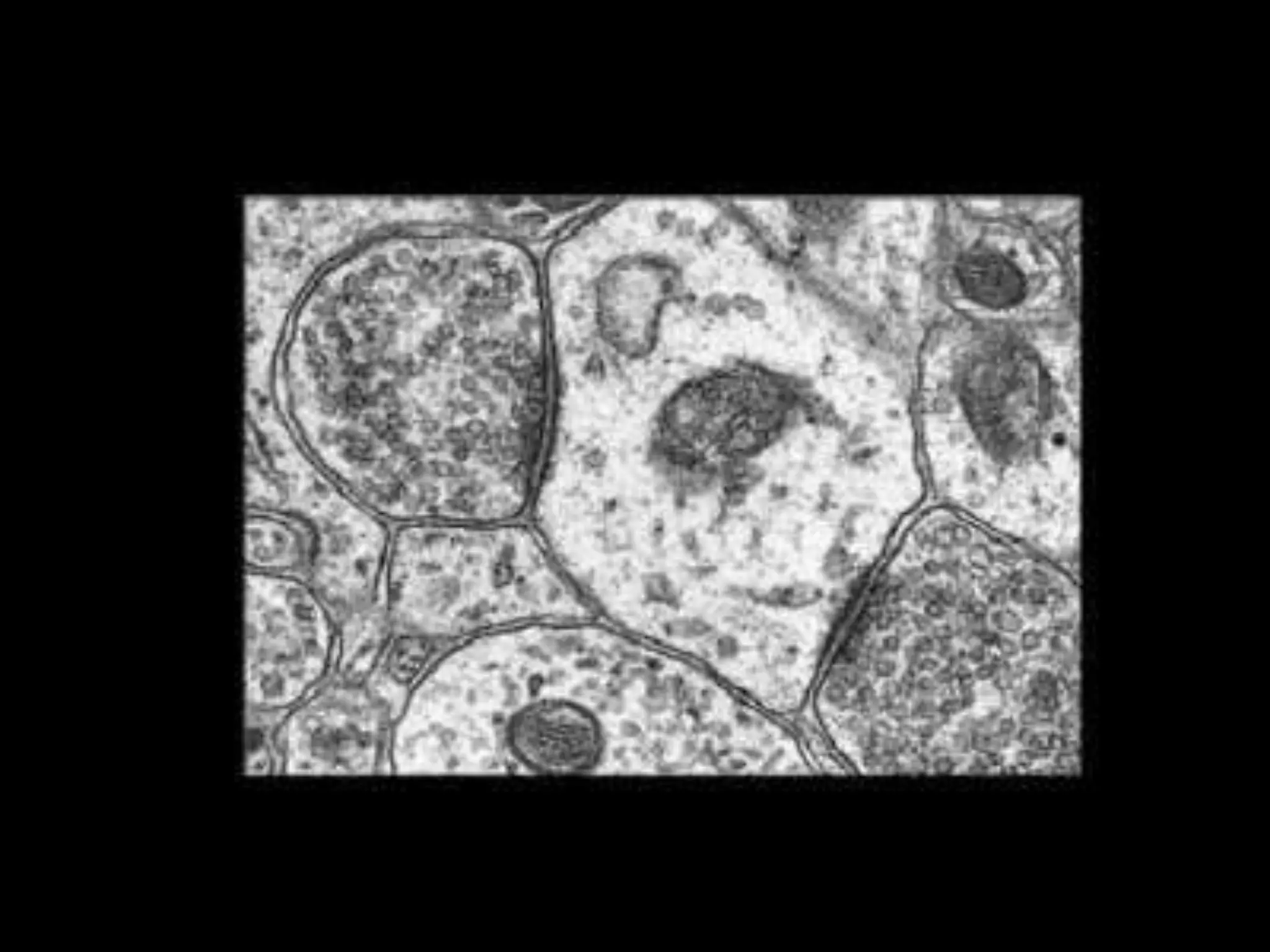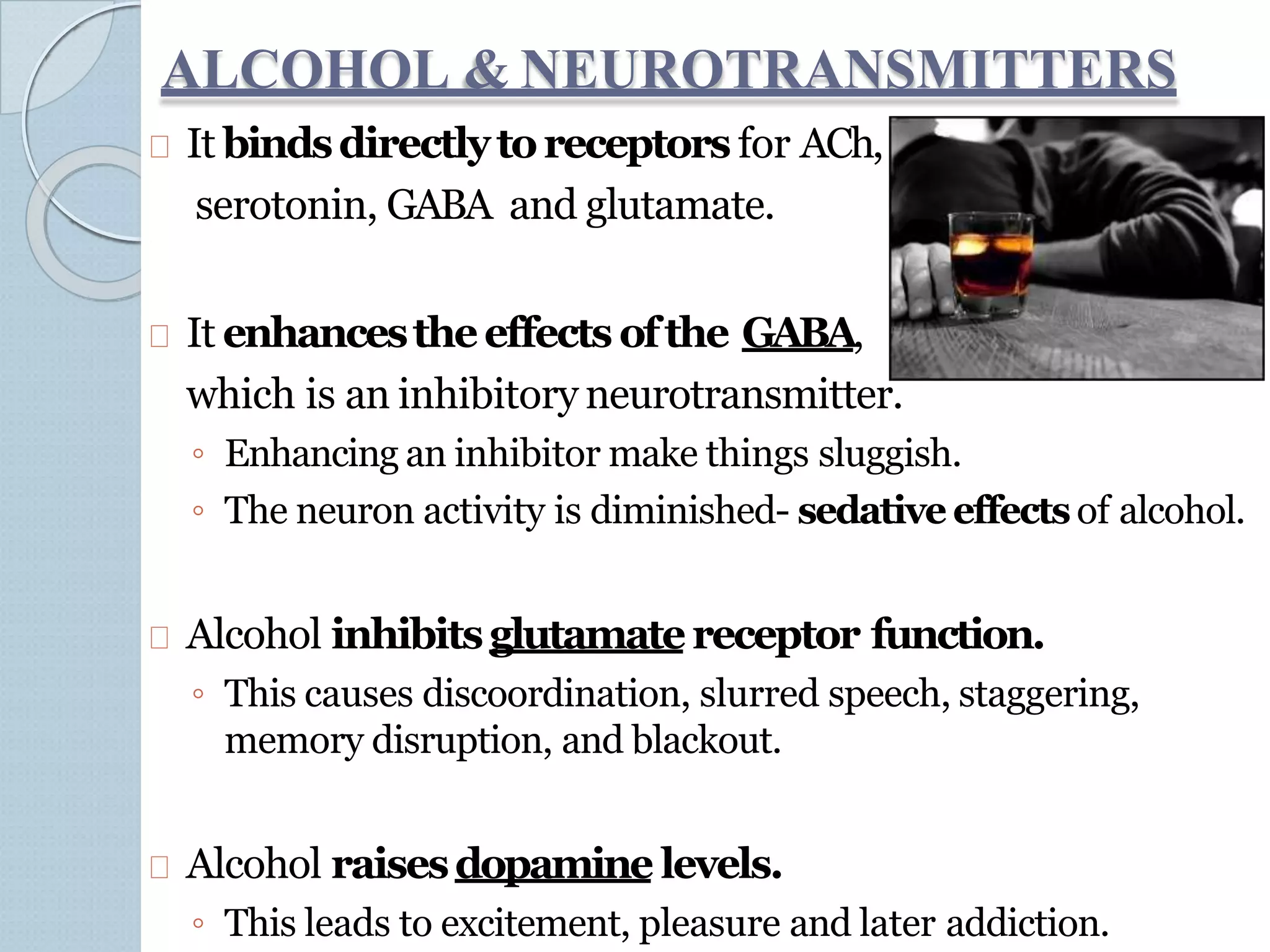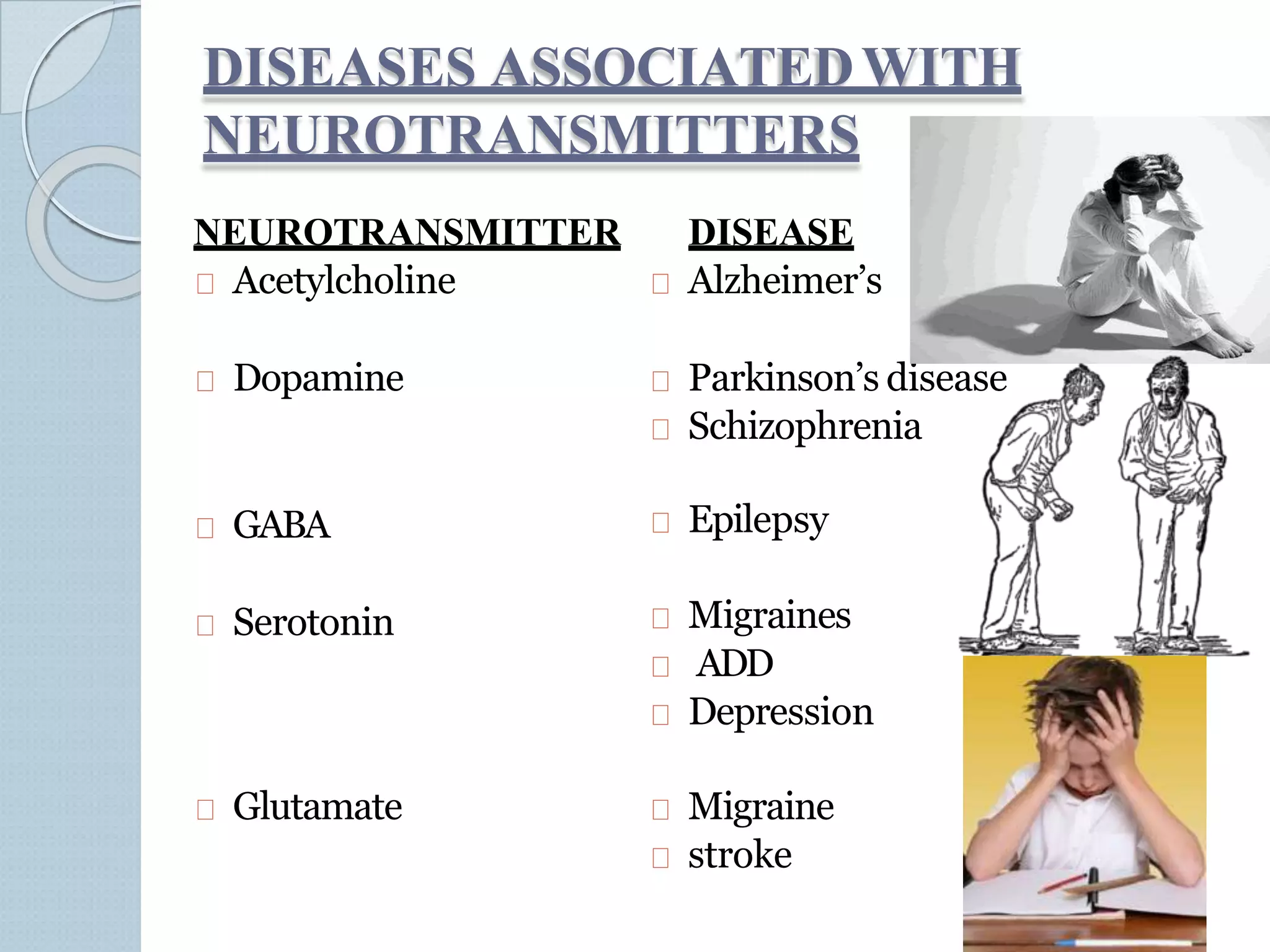1) Neurotransmitters are chemical messengers that transmit signals from neurons. They are synthesized from precursors, stored in vesicles, released into the synapse, bind to receptors, and are then inactivated.
2) The major neurotransmitters are acetylcholine, dopamine, norepinephrine, glutamate, GABA, and serotonin. Acetylcholine, dopamine, and norepinephrine are both excitatory and inhibitory. Glutamate and aspartate are excitatory, while glycine, GABA, and serotonin are inhibitory.
3) Neurotransmitters are involved in various diseases when they are deficient or excessive, such as acetylcholine in Alzheimer's, dopamine in Parkinson's, and serotonin

